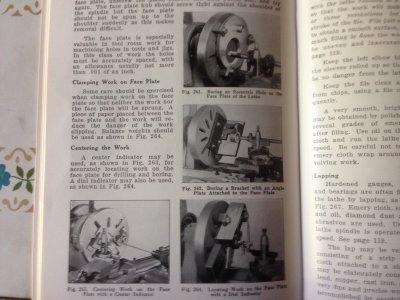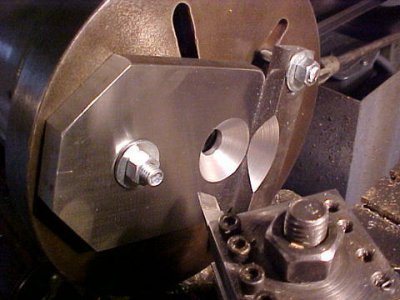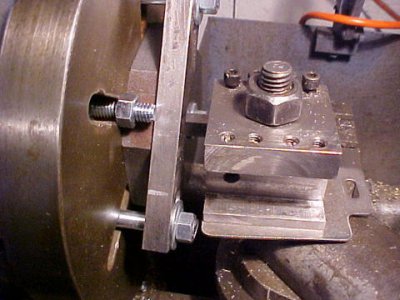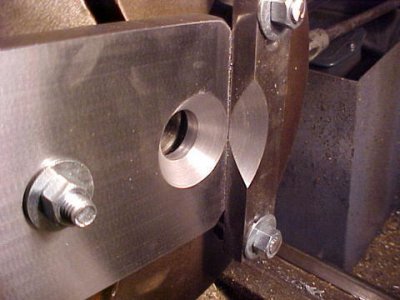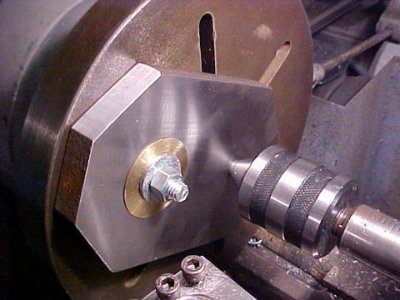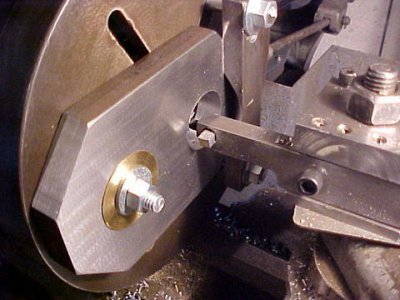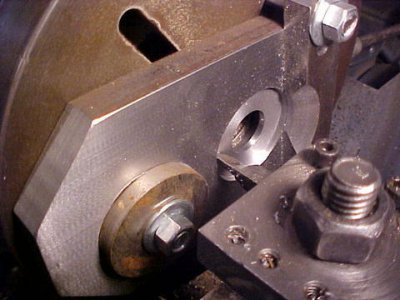- Joined
- Jul 9, 2014
- Messages
- 613
Would some of the more experienced guys be willing to help build this thread ?
I've had a search in the index and can't find much out about using the face plate to turn larger than the chuck jaws pieces, nor can I find much about turning between centres using face plate & dog.
Have any of you made special parts to enable face plate or dog turning , do you have any pictures ?
I have an exercise that involves two sets of bolting two 200 mm lg x 50 mm square blocks of aluminium bar together with a thin spacer in the middle and turning out two 1& 1/4 inch through holes on the same face ( to clamp two thick wall aluminium tubes in position eventually ) the spacer is to allow me some clamping distance without crushing or nipping the tube too tight once the holes are turned and the spacer is removed.
I'll have to use the face plate for it & am looking for ideas as to what you guys use to make the clamping plates etc to secure large things like this to the face plate.
I've had a search in the index and can't find much out about using the face plate to turn larger than the chuck jaws pieces, nor can I find much about turning between centres using face plate & dog.
Have any of you made special parts to enable face plate or dog turning , do you have any pictures ?
I have an exercise that involves two sets of bolting two 200 mm lg x 50 mm square blocks of aluminium bar together with a thin spacer in the middle and turning out two 1& 1/4 inch through holes on the same face ( to clamp two thick wall aluminium tubes in position eventually ) the spacer is to allow me some clamping distance without crushing or nipping the tube too tight once the holes are turned and the spacer is removed.
I'll have to use the face plate for it & am looking for ideas as to what you guys use to make the clamping plates etc to secure large things like this to the face plate.
Last edited:

